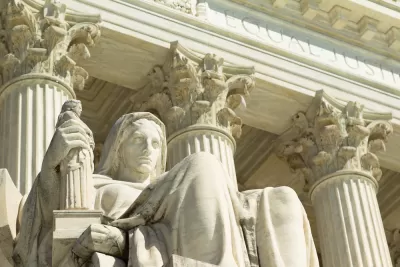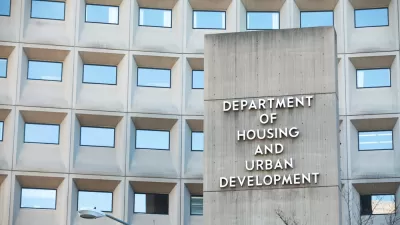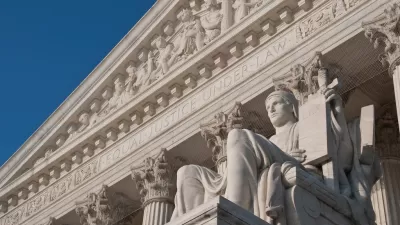A decision by the U.S. Supreme Court this week could reframe the separation of church and state, especially with regard to the flow of public funding and aid programs.

"The Supreme Court ruled on Monday that the state of Missouri cannot deny public funds to a church simply because it is a religious organization," reports Emma Green.
The relevance of the court ruling in Trinity Lutheran v. Comer is framed in this article and others for its potential to redefine the legal boundaries between church and state, but one look at the controversy that led to the court case reveals its implications for planning: the case grew out of a request by Trinity Lutheran Church in Missouri for a state grant to resurface its playground. Though the project seemed a strong candidate for the grant, "Missouri denied the funding under a state constitutional provision that prohibits public money from going to religious organizations and houses of worship."
According to Green, many states would have made the same decision as Missouri in this case, under the power of so-called "Blaine amendments." Missouri and other states will now have to re-evaluate there consideration of churches applying for funding from secular, neutral aid programs. "This is the first time the court has said the government is required to provide public funding directly to a religious organization," according to Green, with implications for such institutions as private schools, but also, significantly, for anyone who applies for competitive federal funding for development projects.
FULL STORY: The Supreme Court Strikes Down a Major Church-State Barrier

Planetizen Federal Action Tracker
A weekly monitor of how Trump’s orders and actions are impacting planners and planning in America.

Congressman Proposes Bill to Rename DC Metro “Trump Train”
The Make Autorail Great Again Act would withhold federal funding to the system until the Washington Metropolitan Area Transit Authority (WMATA), rebrands as the Washington Metropolitan Authority for Greater Access (WMAGA).

The Simple Legislative Tool Transforming Vacant Downtowns
In California, Michigan and Georgia, an easy win is bringing dollars — and delight — back to city centers.

The States Losing Rural Delivery Rooms at an Alarming Pace
In some states, as few as 9% of rural hospitals still deliver babies. As a result, rising pre-term births, no adequate pre-term care and "harrowing" close calls are a growing reality.

The Small South Asian Republic Going all in on EVs
Thanks to one simple policy change less than five years ago, 65% of new cars in this Himalayan country are now electric.

DC Backpedals on Bike Lane Protection, Swaps Barriers for Paint
Citing aesthetic concerns, the city is removing the concrete barriers and flexposts that once separated Arizona Avenue cyclists from motor vehicles.
Urban Design for Planners 1: Software Tools
This six-course series explores essential urban design concepts using open source software and equips planners with the tools they need to participate fully in the urban design process.
Planning for Universal Design
Learn the tools for implementing Universal Design in planning regulations.
Smith Gee Studio
City of Charlotte
City of Camden Redevelopment Agency
City of Astoria
Transportation Research & Education Center (TREC) at Portland State University
US High Speed Rail Association
City of Camden Redevelopment Agency
Municipality of Princeton (NJ)





























